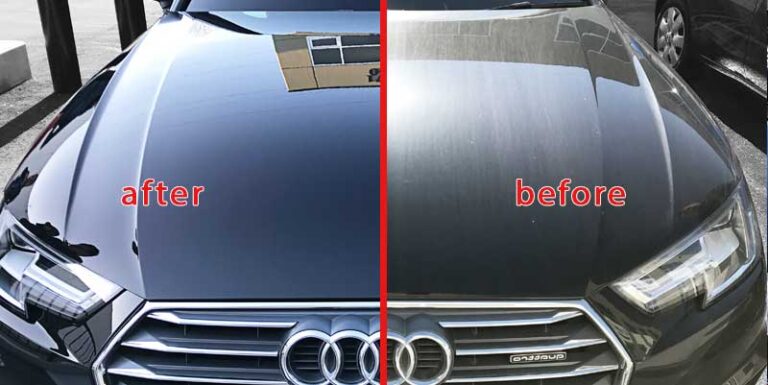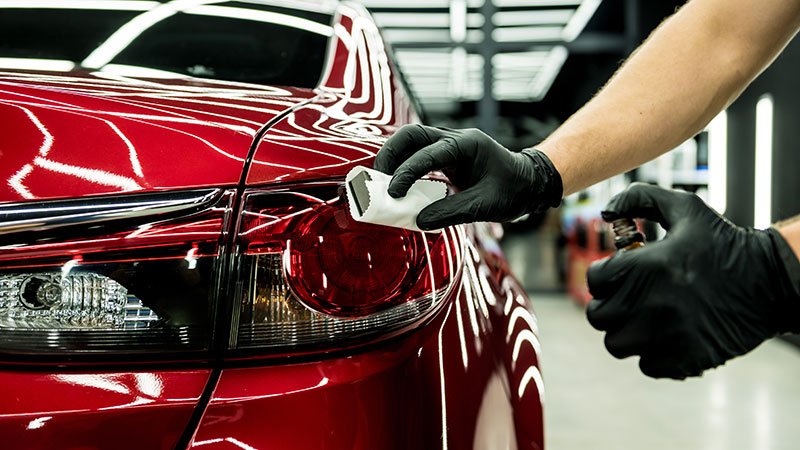Why Ceramic Covering Is the Ultimate Remedy for a Flawless End Up
Ceramic coating has actually emerged as a leading service for those looking for a flawless surface for their lorries, thanks to its amazing resilience and safety functions. What elements absolutely set ceramic coating apart?
What Is Ceramic Coating?

When applied correctly, ceramic finish produces a hydrophobic surface area that pushes back water and dirt, making it much easier to preserve and clean. Unlike conventional waxes or sealants, which typically use short-lived security, ceramic coatings can last for numerous years, relying on the product top quality and application technique. The procedure of using ceramic covering calls for careful prep work, including complete cleaning and sometimes repaint improvement, to guarantee ideal bonding and effectiveness.
Ceramic layers are not restricted to automobile surfaces; they can additionally be utilized on various products, consisting of glass, metal, and plastics, offering a functional option for enhancing defense. In general, ceramic finishing represents a considerable improvement in surface security technology, combining both functional and aesthetic advantages for a wide array of applications.
Advantages of Ceramic Finishing
While numerous surface protection options exist, the benefits of ceramic layer stand apart because of its unique homes and resilient performance. Among the main advantages is its phenomenal resilience. Ceramic Coating Philadelphia. Unlike traditional wax or sealers that call for constant reapplication, ceramic coatings give a durable layer that can last for several years, substantially lowering maintenance efforts
Another notable advantage is enhanced defense against ecological contaminants. Ceramic finishes create a hydrophobic surface area that repels water, dust, and numerous toxins, making it easier to clean up. This attribute not only protects the lorry's look but also lessens the risk of rust and oxidation, especially in severe weather.
Moreover, ceramic finishings provide exceptional resistance to UV rays, avoiding fading and degradation of paint over time. This UV security is critical for keeping the aesthetic worth of surfaces and lorries exposed to direct sunshine.
Furthermore, the shiny surface attained with ceramic layer boosts the overall aesthetic charm, giving surfaces a showroom-quality shine. Generally, ceramic layers represent a considerable improvement in surface security modern technology, supplying enduring benefits that accommodate both practical and visual requirements.
How It Functions
Recognizing the science behind ceramic coverings exposes how they provide such exceptional protection and longevity. At its core, a ceramic covering is a fluid polymer that chemically bonds with the car's manufacturing facility paint. This bonding develops a safety layer that is both hydrophobic and oleophobic, repelling water, dust, and oil. The main part of a lot of ceramic finishes is silicon dioxide (SiO2), which is stemmed from quartz. This compound contributes to the finishing's solidity and resistance to scratches, UV rays, and ecological impurities.
The application process includes several steps, consisting of surface area prep work, which is important to attaining optimum bond. As soon as used, the coating undertakes a healing procedure, during which it sets and creates a semi-permanent bond with the paint surface. This bond is what differentiates ceramic layers from conventional waxes and sealants, offering a longer-lasting protective barrier that can withstand for many years.
Moreover, the thickness of the layer can improve its safety top qualities, making certain that it can stand up to rough conditions. Inevitably, the science of ceramic coatings integrates advanced materials with innovative application methods to supply an unmatched degree of defense and aesthetic enhancement for automobiles.
Contrast With Typical Approaches
The advantages of ceramic layers come to be visit this site right here especially apparent when contrasted to typical paint security techniques such as waxes and sealants. While waxes supply a momentary shine, usually lasting a couple of weeks to a pair of months, ceramic layers provide a durable safety layer that can withstand for a number of years. This sturdiness substantially reduces the regularity of reapplication, making ceramic finishes an extra cost-efficient option with time.
Furthermore, traditional techniques often call for extensive prep work and several applications to accomplish a satisfying level of defense. In contrast, ceramic finishings bond at a molecular degree with the automobile's surface, creating a durable guard versus environmental contaminants like UV rays, acid rainfall, and road salts. This bond improves the vehicle's resistance to scrapes and swirl marks, which are prevalent with typical waxes and sealants.
In addition, the hydrophobic homes of ceramic coatings push back water and dirt, bring about simpler cleansing and upkeep. In contrast, wax and sealant-treated surface areas can attract grime, requiring more regular cleaning - Ceramic Coating Philadelphia. Overall, ceramic finishings not only give premium security yet also provide a much more visually enticing and enduring surface, establishing them as the recommended selection for critical you can look here vehicle proprietors
Application and Upkeep Tips

Making use of a foam applicator, apply the coating in tiny sections, complying with the maker's standards relating to density and overlap. Enable adequate treating time between layers, typically 24-hour, to make certain correct bonding. After application, it is essential to prevent exposure to water or extreme components for at the very least a week to allow the covering to fully treat.
In addition, using a ceramic upkeep spray can enhance the covering's hydrophobic buildings and long life. Normal examinations for any signs of wear will certainly assist preserve the covering's integrity and maintain that beautiful finish.
Conclusion
In final thought, ceramic layer emerges as a premium alternative her explanation for attaining a remarkable automobile coating. By developing a durable bond with manufacturing facility paint, ceramic coating effectively guards versus scratches, UV rays, and environmental pollutants.
